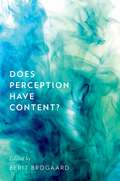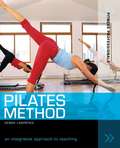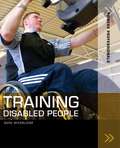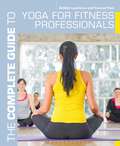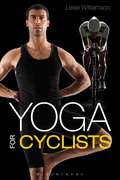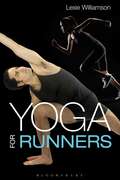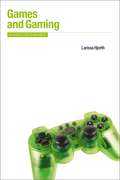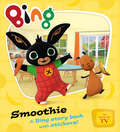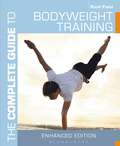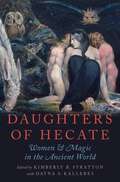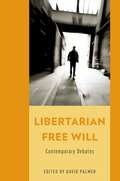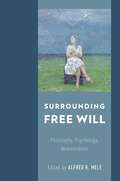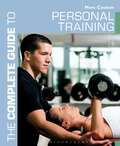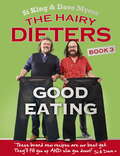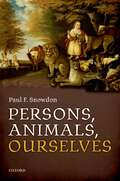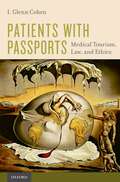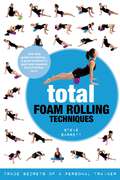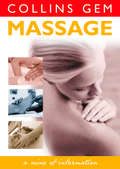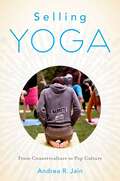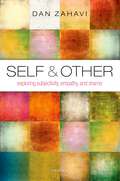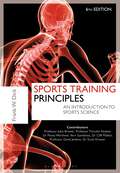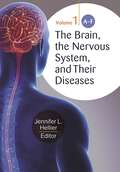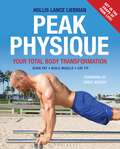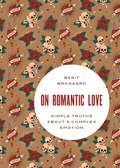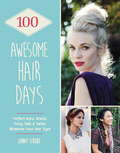- Table View
- List View
Does Perception Have Content? (Philosophy of Mind)
Within the contemporary philosophical debates over the nature of perception, the question of whether perception has content in the first place recently has become a focus of discussion. The most common view is that it does, but a number of philosophers have questioned this claim. The issue immediately raises a number of related questions. What does it mean to say that perception has content? Does perception have more than one kind of content? Does perceptual content derive from the content of beliefs or judgments? Should perceptual content be understood in terms of accuracy conditions? Is naive realism compatible with holding that perception has content? This volume brings together philosophers representing many different perspectives to address these and other central questions in the philosophy of perception.
Pilates Method: An integrative approach to teaching (Fitness Professionals)
by Debbie LawrenceFitness Professionals: Pilates Method is the first book to be written for the specific needs of Pilates instructors. It contains everything a new teacher needs to know in order to pass the national qualification and is an ideal reference for experienced instructors.Pilates is one of the most popular - and fastest growing - group exercise classes in the UK. For many years it has not been possible to write a definitive book for instructors as there have been many different schools of teaching. However, these have recently been brought together under a single national assessment, meaning that all Pilates instructors must have the same foundation knowledge.This book will cover these foundation subjects, which include:anatomy the key principles of Pilates assessment structuring a session teaching a session. Written to the requirements of the national standards, this book contains everything an instructor needs to know in order to successfully teach Pilates.
Training Disabled People (Fitness Professionals)
by Sara WicebloomTraining Disabled People is the only book to provide fitnessprofessionals with detailed guidance on working with disabled clients.The book is written to the National Standards, so provides the readerwith everything they need to know in order to gain qualification and beable to work safely and effectively with disabled clients. Training disabled clients is currently the most in-demand course atmany of the fitness industry training centres - they are struggling tokeep up with demand. This follows legislation and Governmentinitiatives designed to improve access to fitness centres for disabledpeople and to encourage them to take part in regular exercise. The book covers a range of areas, including: medical conditions and how to research them programming and instruction skills pre-exercise checks and fitness testing communication skills (including sign language) motivation techniques sample programmes and exercises, fully illustrated with B&W photographychecklists and forms to be used when working with clients.
The Complete Guide to Yoga for Fitness Professionals
by Debbie Lawrence Conrad PaulThe Complete Guide to Yoga for Fitness Professionals gives you the necessary skills to become a successful yoga teacher or practitioner. Whether you are looking for information on planning, structuring and delivering a yoga class, or are looking to increase your general understanding and appreciation of the history and ancient lineage of yoga, our experienced authors are here to help.Reaching beyond the typical 'how to' guides, this book not only covers the basics but also details more advanced teaching techniques. Master how to teach the classic asana pose, including the benefits, precautions, prohibitions and modifications of a selection of some other Hatha yoga postures. Higher level yoga practices are found in Part Three, along with information about how to deal with common conditions of participants encountered in a yoga class and any adaptations that need to be made to support them.
Yoga for Cyclists
by Lexie WilliamsonYoga is fast becoming an essential performance tool for road cyclists keen to improve flexibility, core strength, balance, breathing efficiency and mental focus. Most cyclists want to ride harder for longer but the unnatural slouched posture and repetitive nature of riding takes its toll on the body. Short, tight hamstrings, hip flexors and quadriceps are easily damaged and, over time, can cause knock-on problems in the lower back or knees. But a cyclist with a supple back, hips and hamstrings will not only be far less prone to overuse injuries than his stiffer training partners. He can also hunker down into aerodynamic positions easily and ride for longer, with more comfort. A cyclist able to breathe slower and deeper will breathe more efficiently and economically. A cyclist able to reduce adrenaline and control a scattered mind with concentration techniques will remain calm and focused in the heat of a race. Yoga for Cyclists will be the first title to address all of these areas by adapting yoga techniques specifically for cyclists of all levels, in clear, concise chapters. This is the ideal, no-nonsense resource, where every stretch, strengthening posture, breathing or recovery technique relates back to its impact on performance.
Yoga for Runners
by Lexie WilliamsonRunning is a fantastic cardiovascular workout that floods the body with 'feel good' endorphins and many runners find its rhythmic, repetitive nature a natural stress reliever and maybe even meditative. The downside of repetitive motion, however, is that it taxes a few select groups of muscles (hamstrings, quadriceps, hip flexors and Achilles) and neglects the remainder. This leads to muscular imbalances and, eventually, injury.This book addresses these imbalances by using yoga postures to both stretch and lengthen these short, tight running hotspots in a way that is time-efficient and highly targeted.Like yoga it's a union of all these physical and mental aspects that affect the performance of the runner as a whole. Practice the techniques together to become a stronger, smoother runner who is less prone to injury. Breathe deeper and more efficiently to train for longer. Gain a clear head to tackle negative distractions as you train or race, and in life generally.
How are you feeling today?: A Let's Talk picture book to help young children understand their emotions
by Molly PotterWe all experience emotions and emotions are absolutely fine as long as we know what to do with them. Feelings arrive effortlessly enough but deciding what to do with them when they turn isn't so easy - especially when you are a child. Cue: this book! It provides children with several straightforward, entertaining and appropriate interactive ideas to help them deal with a selection of significant emotions.A great dip-in book where children can choose a feeling that relates to them and then turn to the page that provides child-friendly strategies for dealing with that feeling. Helpful parent notes at the back of the book provide more ideas for parents to use with their child and other strategies to try out together and practice the all important skill of dealing with feelings.
Bing Smoothie (Bing)
by HarperCollinsChildren’sBooksJoin Bing and his friends in the first story book of the amazing new TV series Bing!
The Complete Guide to Bodyweight Training
by Kesh PatelBodyweight training is one of the growing global trends in fitness. It's simple enough to explain – using your own body weight to improve your fitness and strength, and yoga and gymnastic practitioners have been doing this for years. But the theory behind it isn't often understood. Kesh Patel contextualises bodyweight training – where did it come from? What is Evolutionary Fitness? and looks at the theory behind it. Understand the basics of biomechanics and you can adapt and improve your bodyweight training programmes and improve your results. So find out about working with gravity, how skills acquisition works, how to develop posture and balance – all based on biomechanical principles. This book is packed with practical, clear and accessible exercise ideas, progressing from fundamental movement patterns to more advanced exercises, along with details of exercise programming - including adaptations for different skill levels, working with groups, and ideas to integrate bodyweight exercises into traditional weight training, circuit and bootcamp classes, to name but a few.
Daughters of Hecate: Women and Magic in the Ancient World
by Kimberly B. Stratton Dayna S. KalleresDaughters of Hecate unites for the first time research on the problem of gender and magic in three ancient Mediterranean societies: early Judaism, Christianity, and Graeco-Roman culture. The book illuminates the gendering of ancient magic by approaching the topic from three distinct disciplinary perspectives: literary stereotyping, the social application of magic discourse, and material culture. The authors probe the foundations of, processes, and motivations behind gendered stereotypes, beginning with Western culture's earliest associations of women and magic in the Bible and Homer's Odyssey. Daughters of Hecate provides a nuanced exploration of the topic while avoiding reductive approaches. In fact, the essays in this volume uncover complexities and counter-discourses that challenge, rather than reaffirm, many gendered stereotypes taken for granted and reified by most modern scholarship. By combining critical theoretical methods with research into literary and material evidence, Daughters of Hecate interrogates a false association that has persisted from antiquity, to early modern witch hunts, to the present day.
Libertarian Free Will: Contemporary Debates
According to the libertarian position on free will, people sometimes exercise free will, but this freedom is incompatible with the truth of causal determinism. Frequently maligned within the history of philosophy, this view has recently gained increasingly sympathetic attention among philosophers. But stark questions remain: How plausible is this view? If our actions are not causally determined, how can we have control over them? Why should we want our actions to be breaks in the deterministic causal chain? The recent resurgence of interest in libertarianism is due, most significantly, to Robert Kane, who is the leading contemporary defender of this view of free will. This book is a collection of new essays on the libertarian position on free will and related issues that focuses specifically on the views of Kane. Written by a distinguished group of philosophers, the essays cover various areas of philosophy including metaphysics, ethics, and philosophy of mind. Kane contributes a final essay, replying to the criticisms offered in the previous chapters and developing his view in new directions.
Surrounding Free Will: Philosophy, Psychology, Neuroscience
This volume showcases cutting-edge scholarship from The Big Questions in Free Will project, funded by a grant from the John Templeton Foundation and directed by Alfred R. Mele. It explores the subject of free will from the perspectives of neuroscience; social, cognitive, and developmental psychology; and philosophy (both traditional and experimental). The volume consists of fourteen new articles and an introduction from top-ranked contributors, all of whom bring fresh perspectives to the question of free will. They investigate questions such as: How do children conceive of free will and how does their concept of free will develop? How does lowered or raised confidence in the existence of free will affect our behavior? What modifies our power to resist temptation? What do lay folk mean by free will? What brain processes underlie decisions? How does the conscious experience of voluntary action contribute to the neural control of behavior? What are the neural differences between deliberate choosing and arbitrary picking? How do neuroscientific studies of decision making in monkeys bear on human free will? Is determinism compatible with free will? What can a proper understanding of causation tell us about free will? What is moral responsibility? Readers interested in the current and future direction of scholarship on free will find this volume essential reading.
The Complete Guide to Personal Training
by Morc CoulsonA complete reference guide for anyone involved in prescribing exercise programmes for personal training clients. Contains practical tips for designing a range of appropriate client exercise programmes but always with a focus on the best ways you can sustain a business in this area and how you can stand out from the crowd.The Complete Guide to Personal Training also covers all of the Level 3 requirements detailed within the Health and Fitness National Occupational Standards and the Qualifications Framework pertaining to personal training, and provides the theoretical underpinning of how to programme appropriate exercise for your clients.Includes information on:The foundations of personal trainingPlanning and delivering exercise programmesTraining methods and exercise techniquesNutritionHealth and safetyIdeal for personal trainers in the health and fitness industry as well as those wishing to undertake qualifications in this area.
The Hairy Dieters: Good Eating (ebook)
by Hairy BikersFollowing on from their multi-million selling diet books, THE HAIRY DIETERS and THE HAIRY DIETERS: EAT FOR LIFE, the Hairy Bikers share more delicious low-calorie recipes and easy-to-follow advice.Si King and Dave Myers, aka the Hairy Bikers, have been entertaining and feeding Britain with their unique blend of tasty recipes, cheeky humour and motorbike enthusiasm for years now. The Hairy Dieters books have sold nearly 2 million copies in the UK and their third diet book provides even more low-cal family favourites.Si King and Dave Myers are the nation's favourite food heroes. The stars of numerous TV cookery series, they represent all that is good-hearted and loved about food.
Persons, Animals, Ourselves
by Paul F. SnowdonThe starting point for this book is a particular answer to a question that grips many of us: what kind of thing are we? The particular answer is that we are animals (of a certain sort)—a view nowadays called 'animalism'. This answer will appear obvious to many but on the whole philosophers have rejected it. Paul F. Snowdon proposes, contrary to that attitude, that there are strong reasons to believe animalism and that when properly analysed the objections against it that philosophers have given are not convincing. One way to put the idea is that we should not think of ourselves as things that need psychological states or capacities to exist, any more that other animals do. The initial chapters analyse the content and general philosophical implications of animalism—including the so-called problem of personal identity, and that of the unity of consciousness—and they provide a framework which categorises the standard philosophical objections. Snowdon then argues that animalism is consistent with a perfectly plausible account of the central notion of a 'person', and he criticises the accounts offered by John Locke and by David Wiggins of that notion. In the two next chapters Snowdon argues that there are very strong reasons to think animalism is true, and proposes some central claims about animal which are relevant to the argument. In the rest of the book the task is to formulate and to persuade the reader of the lack of cogency of the standard philosophical objections, including the conviction that it is possible for the animal that I would be if animalism were true to continue in existence after I have ceased to exist, and the argument that it is possible for us to remain in existence even when the animal has ceased to exist. In considering these types of objections the views of various philosophers, including Nagel, Shoemaker, Johnston, Wilkes, and Olson, are also explored. Snowdon concludes that animalism represents a highly commonsensical and defensible way of thinking about ourselves, and that its rejection by philosophers rests on the tendency when doing philosophy to mistake fantasy for reality.
Patients with Passports: Medical Tourism, Law, and Ethics
by I. Glenn CohenCan your employer require you to travel to India for a hip replacement as a condition of insurance coverage? If injury results, can you sue the doctor, hospital or insurer for medical malpractice in the country where you live? Can a country prohibit its citizens from helping a relative travel to Switzerland for assisted suicide? What about travel for abortion? In Patients with Passports, I. Glenn Cohen tackles these important questions, and provides the first comprehensive legal and ethical analysis of medical tourism. Medical tourism is a growing multi-billion dollar industry involving millions of patients who travel abroad each year to get health care. Some seek legitimate services like hip replacements and travel to avoid queues, save money, or because their insurer has given them an incentive to do so. Others seek to circumvent prohibitions on accessing services at home and go abroad to receive abortions, assisted suicide, commercial surrogacy, or experimental stem cell treatments. In this book, author I. Glenn Cohen focuses on patients traveling for cardiac bypass and other legal services to places like India, Thailand, and Mexico, and analyzes issues of quality of care, disease transmission, liability, private and public health insurance, and the effects of this trade on foreign health care systems. He goes on to examine medical tourism for services illegal in the patient's home country, such as organ purchase, abortion, assisted suicide, fertility services, and experimental stem cell treatments. Here, Cohen examines issues such as extraterritorial criminalization, exploitation, immigration, and the protection of children. Through compelling narratives, expert data, and industry explanations Patients with Passports enables the reader to connect with the most prevalent legal and ethical issues facing medical tourism today.
Total Foam Rolling Techniques: Trade Secrets of a Personal Trainer
by Steve BarrettThe ultimate 'one stop' guide to using foam rollers. A relative newcomer to the fitness scene, lots of us don't know how to use foam rollers effectively as part of an exercise or training routine. Originally used only by physiotherapists and exercise therapists this 'new' piece of kit has become a mainstay of workouts. Foam rollers work by releasing muscle tension to relieve pain, aid injury recovery and improve flexibility - all through massaging and manipulating muscles. Practical and easily accessible, The Total Foam Rolling Workout is perfect for the fitness enthusiast or fitness professional who wants to lightly improve their knowledge and heavily improve the range of exercises they can use in their training. Tried and tested exercises are accompanied by clear photos and illustrations.This book is brimming with ideas for using foam rollers not just in the gym, but at home too. Packed with clear and easy to use exercises, this how-to reference book also provides adaptations of basic and advanced workouts, making it ideal for anyone who wants to get the most out of their fitness gear.- Each exercise idea is organised by fitness level and includes follow-up and extension ideas.- Written in a jargon-free and concise style, this book is light on the science and background, heavy on practicality.
Massage (Collins Gem)
by CollinsMassage is one of the oldest and simplest therapeutic arts and its benefits have been long known. This Gem provides an accessible and practical guide.
Selling Yoga: From Counterculture to Pop Culture
by Andrea JainPremodern and early modern yoga comprise techniques with a wide range of aims, from turning inward in quest of the true self, to turning outward for divine union, to channeling bodily energy in pursuit of sexual pleasure. Early modern yoga also encompassed countercultural beliefs and practices. In contrast, today, modern yoga aims at the enhancement of the mind-body complex but does so according to contemporary dominant metaphysical, health, and fitness paradigms. Consequently, yoga is now a part of popular culture. In Selling Yoga, Andrea R. Jain explores the popularization of yoga in the context of late-twentieth-century consumer culture. She departs from conventional approaches by undermining essentialist definitions of yoga as well as assumptions that yoga underwent a linear trajectory of increasing popularization. While some studies trivialize popularized yoga systems by reducing them to the mere commodification or corruption of what is perceived as an otherwise fixed, authentic system, Jain suggests that this dichotomy oversimplifies the history of yoga as well as its meanings for contemporary practitioners. By discussing a wide array of modern yoga types, from Iyengar Yoga to Bikram Yoga, Jain argues that popularized yoga cannot be dismissed--that it has a variety of religious meanings and functions. Yoga brands destabilize the basic utility of yoga commodities and assign to them new meanings that represent the fulfillment of self-developmental needs often deemed sacred in contemporary consumer culture.
Self and Other: Exploring Subjectivity, Empathy, and Shame
by Dan ZahaviCan you be a self on your own or only together with others? Is selfhood a built-in feature of experience or rather socially constructed? How do we at all come to understand others? Does empathy amount to and allow for a distinct experiential acquaintance with others, and if so, what does that tell us about the nature of selfhood and social cognition? Does a strong emphasis on the first-personal character of consciousness prohibit a satisfactory account of intersubjectivity or is the former rather a necessary requirement for the latter? Engaging with debates and findings in classical phenomenology, in philosophy of mind and in various empirical disciplines, Dan Zahavi's new book Self and Other offers answers to these questions. Discussing such diverse topics as self-consciousness, phenomenal externalism, mindless coping, mirror self-recognition, autism, theory of mind, embodied simulation, joint attention, shame, time-consciousness, embodiment, narrativity, self-disorders, expressivity and Buddhist no-self accounts, Zahavi argues that any theory of consciousness that wishes to take the subjective dimension of our experiential life serious must endorse a minimalist notion of self. At the same time, however, he also contends that an adequate account of the self has to recognize its multifaceted character, and that various complementary accounts must be integrated, if we are to do justice to its complexity. Thus, while arguing that the most fundamental level of selfhood is not socially constructed and not constitutively dependent upon others, Zahavi also acknowledges that there are dimensions of the self and types of self-experience that are other-mediated. The final part of the book exemplifies this claim through a close analysis of shame.
Sports Training Principles: An Introduction to Sports Science
by Dr Frank Dick O. B. E. Penny Werthner Scott Drawer Vern Gambetta Cliff Mallett David Jenkins Tim NoakesThis is the new, fully revised, sixth edition of this ultimate reference tool for all coaches responsible for training athletes to fulfill their performance potential. Written by world-renowned and highly sought after coach and President of the European Athletics Coaches Association, Frank W. Dick, with contributions from Professor Timothy Noakes (University of Cape Town, South Africa), Dr Penny Werthner (University of Calgary, Canada), Scott Drawer (English Institute of Sport, UK), Vern Gambetta (USA Track & Field), Dr Cliff Mallett and Dr David Jenkins (University of Queensland, Australia), this textbook comprehensively covers the core aspects of sports coaching which can be applied to all sports and disciplines. This new edition has been extensively revised to incorporate the latest theory and practice in sports training and coaching, with supplementary contributions from international experts. The book covers the key sports science topics: Anatomy and physiology; Biomechanics, Psychology; Nutrition; Performance Analysis; Training; and Coaching methodsThis is a highly recommended resource for students of applied sports science, sports coaching, sports development, PE teachers, fitness advisers, coaches and athletes.
The Brain, the Nervous System, and Their Diseases [3 volumes]: [3 volumes]
This comprehensive encyclopedia provides a thorough overview of the human brain and nervous system—the body's "CPU and data network." It covers basic anatomy and function, diseases and disorders, treatment options, wellness concepts, and key individuals in the fields of neurology and neuroscience.Written to be accessible to high school and college students and general readers, this three-volume encyclopedia provides a sweeping overview of the brain, nervous system, and their diseases. Bringing together contributions from leading neuroscientists, neurologists, family physicians, psychologists, and public health professionals, the work covers both brain anatomy and function and neurological disorders, addressing how underlying processes—whether biological, developmental, environmental, or neurodegenerative—manifest themselves.Roughly a third of the entries are about neuroscience and how neurons "talk" to each other in brain circuits to provide normal function. Another group of entries discusses abnormalities or dysfunctions of the brain that develop into disorders or diseases, while a third group focuses on research and experimental procedures commonly used to study the nervous system. The encyclopedia also explores its subject from a wellness perspective, explaining actions that can prevent neurological disorders and injuries and promote general nervous system health. By addressing both ends of the spectrum, the work presents a holistic perspective that will appeal to a broad range of readers.
Peak Physique: Your Total Body Transformation
by Hollis Lance Liebman Chris JerichoA fool-proof gym plan from one of Hollywood's hottest trainers that acts like a Swiss army knife giving you everything you need to lose fat and sculpt your body in 12 weeks or less.Offering you multiple tools to achieve physical excellence, Peak Physique features a fully-illustrated, step-by-step progressive exercise plan of cardio and resistance training, which works whether you are male or female, a novice or experienced gym-goer. The book also gives you advice on nutrition and how to fuel your body for peak performance.From your transformative beginnings in Week 1 to the extraordinary tested and proven Week 12 reveal, you can take concrete steps toward achieving the body you've always wanted, for any event!
On Romantic Love: Simple Truths about a Complex Emotion (Philosophy in Action)
by Berit BrogaardRomantic love presents some of life's most challenging questions. Can we choose who to love? Is romantic love rational? Can we love more than one person at a time? And can we make ourselves fall out of love? Berit Brogaard here attempts to get to the bottom of love's many contradictions. This short book, informed by both historical and cutting edge philosophy, psychology, and neuroscience, combines a new theory of romantic love with entertaining anecdotes from real life and accessible explanations of the neuroscience underlying our wildest passions. Against the grain, Brogaard argues that love is an emotion; that it can be, at turns, both rational and irrational; and that it can be manifested in degrees. We can love one person more than another and we can love a person a little or a lot or not at all. And love isn't even always something we consciously feel. However, love -- like other emotions, both conscious and not -- is subject to rational control, and falling in or out of it can be a deliberate choice. This engaging and innovative look at a universal topic, featuring original line drawings by illustrator Gareth Southwell, illuminates the processes behind heartbreak, obsession, jealousy, attachment, and more.
100 Awesome Hair Days: Perfect Buns, Braids, Pony Tails & Twists, Whatever Your Hair Type
by Jenny StrebeStruggling to tame thick and unruly curls? Tired of having limp, lifeless tresses? Hair can be a temperamental thing, but with 100 Awesome Hair Days as your guide you can learn styles that work with your hair, not against it. Whether your hair is fine, flat or frizzy, you will find styles suited to your particular type in chapters dedicated to different types of hair days: Stay-at-Home, Busy, Sporty, Dress-up and Special. A follow-on from the international best-seller Braids, Buns & Twists, this book will ensure you never have a bad hair day again!
